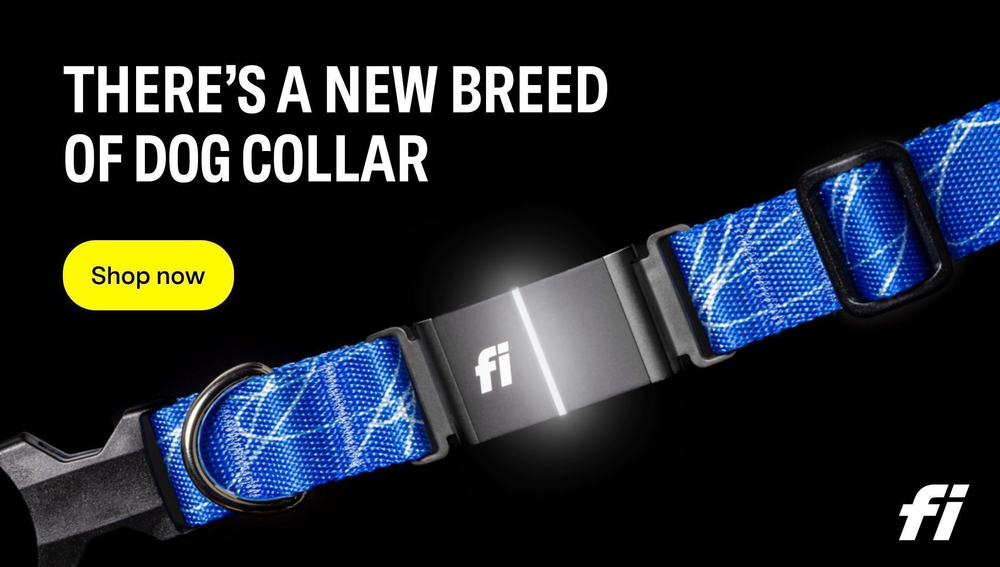Living with a blind dog can be a challenging experience, yet rewarding in many unique ways. As pet owners, it is our responsibility to ensure our furry friends navigate their world safely and confidently, even when faced with visual impairment. One of the most effective tools at our disposal is the blind dog collar.
Understanding the Need for Blind Dog Collars
Advancements in technology have significantly improved the efficacy and comfort of collars designed for blind dogs. Today's modern designs feature adjustable loops that can be tailored to ensure a perfect fit, regardless of the dog coat color, thereby enhancing the aesthetics along with the functionality. Furthermore, these collars use lightweight materials to ensure comfort, and are equipped with integrated sensors that emit audible or vibrating signals to alert the dog of nearby obstacles. This innovative approach has facilitated a more personalized way of helping blind dogs safely navigate their environment.
The Role of Blind Dog Collars in Building Confidence
When dogs first lose their sight, they can become insecure and fearful. Navigating their once familiar world becomes a daunting task, filled with unseen dangers. This is where blind dog collars come in.
Blind dog collars act as a physical buffer, offering a level of protection against potential collisions. By gently notifying the dog of an approaching object, they can adjust their direction and avoid harm. Over time, this creates a sense of assurance in the dog, promoting confidence and independence.
One such story is of Daisy, a nine-year-old Labrador who lost her sight due to age-related conditions. After being fitted with a blind dog collar, Daisy's fear and anxiety started to dissipate. She began to explore her home again, play with her toys, and even participate in walks with newfound enthusiasm.
Training and Adaptation: A Key to Independence
While blind dog collars are an excellent tool, they are not a cure-all solution. Training and adaptation also play an essential role in promoting independence in visually impaired dogs.
Teaching your dog to rely on their other senses like smell and hearing can significantly help them adapt to their new reality. Additionally, keeping your home environment consistent can reduce confusion and potential accidents.
Take the case of Max, a blind Border Collie. Despite his lack of sight, Max's owners have trained him to respond to auditory cues. The sound of a whistle means food, a bell means it's time for a walk, and a particular tap on the floor means an obstacle is ahead. Alongside his blind dog collar, Max can lead an active and fulfilling life.

Choosing the Right Blind Dog Collar
Choosing the correct collar for your blind dog is an important decision, heavily influenced by your dog's size, lifestyle, and level of visual impairment. For a happy dog, it's crucial to select a collar that suits their environment. Collars equipped with wider hoops could be more apt for dogs frequently venturing outdoors, whereas those with smaller, softer bumpers might provide better navigational support for indoor surroundings.
Taking Care of a Blind Dog: More Than Just a Collar
While blind dog collars are invaluable tools, caring for a visually impaired dog involves more than just providing them with the right accessories. Regular vet checkups, a healthy diet, and most importantly, lots of love and patience, are key.
As a dog owner, it's essential to remember that while your pet may be visually impaired, its capacity for love and joy remains unhindered. By using tools like blind dog collars, providing the right training, and showering them with affection, you can help your dog lead a confident, independent life.
Our furry friends may lose their sight, but with the right tools and care, they never lose their light.
Quality of Life Improvements with Blind Dog Collars
Blind dog collars can drastically improve the quality of life for visually impaired dogs. These aids not only assist them in day-to-day navigation but also give them the confidence to interact with their surroundings.
Consider Bella, a blind Dachshund. After Bella lost sight, her owner noticed a decline in Bella's activity levels and an increase in anxiety. Introducing a blind dog collar, however, changed everything. Bella regained her confidence and began playing with her toys again, exploring the garden, and even interacting with other dogs during their walks.
The Innovation Behind Blind Dog Collars
Technological progress has greatly enhanced the functionality and comfort of collars for blind dogs, contributing to a form of therapy for these special pets. These innovative designs incorporate adjustable loops, which can be tailored perfectly to match any dog coat color, offering a harmonious integration with their natural appearance. In addition, they're constructed with lightweight materials for optimum comfort and are equipped with integrated sensors.
These ingenious components produce sounds or vibrations when they detect nearby obstacles, providing a safer navigation method for visually impaired dogs. This groundbreaking strategy has entirely transformed the ways we can aid blind dogs in maneuvering through their environment.
Training a Blind Dog: Going Beyond the Collar
While blind dog collars provide an essential safety barrier, further training can empower blind dogs even more. Training methods such as sound cues, scent markers, and touch commands can help blind dogs understand and navigate their surroundings better.
Remember our friend Max, the Border Collie? Well, his owners didn't stop at sound cues. They also introduced scent markers in their home. Different essential oils would indicate different rooms, helping Max identify his location simply through smell. This, in conjunction with his blind dog collar, enabled Max to regain control over his environment.

Dealing with Misconceptions
It's important to address the misconceptions about blind dogs. Many people believe that they are incapable of leading happy, fulfilling lives. However, this couldn't be further from the truth. With the right tools like blind dog collars and proper care, blind dogs can continue to live joyful lives, full of exploration and love.
Navigating the Challenges: Training Techniques for Blind Dogs
Training a blind dog may seem daunting, but with patience and consistency, you can teach your visually impaired pet to navigate its world effectively. Along with the use of blind dog collars and smart collars like the Fi Dog Collar, several training techniques can aid in their independence.
A commonly used method involves associating different sounds or smells with specific commands or locations. This strategy takes advantage of a dog's heightened sense of smell and hearing, helping them better understand their environment.
For example, consider the case of Lucy, a visually impaired Boxer. Her owner began using a specific bell sound to signal meal times. Over time, Lucy learned to associate sound with food, and she would head toward her feeding area as soon as she heard the bell.
Similarly, scent markers can be highly effective. Different essential oils or scented candles can be used to denote different areas in the house. For Lucy, a lavender scent meant her bed was nearby, while vanilla signaled the location of her toys.
Fostering a Safe Environment for Blind Dogs
Creating a safe and consistent environment is equally important when caring for a blind dog. Changes in furniture placement or introducing new obstacles can be confusing and potentially dangerous for your pet. Keeping their environment consistent allows them to map out their surroundings, reducing the risk of accidents.
It's also recommended to "dog-proof" your home by securing potentially harmful objects or sharp corners. Using a blind dog collar will also protect them, as the collar will alert them to any obstacles in their path.
Community Support and Resources
Being a pet parent to a visually impaired dog can sometimes feel overwhelming, but you're not alone in this journey. Numerous communities and resources are available to provide guidance and support.
Online forums, local pet groups, and even social media platforms can connect you with others who have similar experiences. Veterinarians and pet behaviorists can also offer valuable advice on training techniques and tools, such as the appropriate use of blind dog collars or smart collars like the Fi Dog Collar.
Looking Ahead: The Future of Blind Dog Collars
The field of pet care is continuously evolving, with new innovations aimed at improving the lives of our furry companions. From more advanced blind dog collars to more sophisticated tracking devices like the Fi Dog Collar, the future holds promise for better, more efficient ways of helping our visually impaired pets lead fulfilling lives.
The Fi Dog Collar: A Smart Choice for Visually Impaired Dogs
When considering a dog collar for your visually impaired friend, it's important not just to focus on physical protection but to look at their overall safety and well-being. This is where smart collars like the Fi Dog Collar come into play.

The Fi Dog Collar is a GPS-enabled smart collar that allows you to track your pet's location in real time. For owners of blind dogs, this feature can be particularly beneficial. Even with the best training and tools, visually impaired dogs may occasionally wander off or get disoriented. With the GPS tracking of the Fi Dog Collar, you can keep an eye on your furry friend, ensuring they are safe and secure.
Moreover, the Fi Dog Collar also tracks your dog's physical activity, helping you ensure they are getting the right amount of exercise. For blind dogs, maintaining a healthy lifestyle is particularly crucial, as their other senses become more important for navigation and interaction.
Consider Jake, a visually impaired Golden Retriever. Jake loved his walks but would often get disoriented, causing stress for both him and his owner. After switching to the Fi Dog Collar, Jake's owner could easily keep track of him during their outdoor adventures. Even if Jake wandered off, his owner could locate him immediately, ensuring his safety.
The Fi Dog Collar, combined with a blind dog collar, can significantly improve the quality of life for visually impaired dogs. The blind dog collar provides immediate physical protection, while the Fi Dog Collar offers the added assurance of knowing your pet is safe and healthy. It's a winning combination that promotes both independence and confidence in blind dogs.
Conclusion:
As we conclude this comprehensive look into the world of blind dog collars, we understand that these devices are more than just a piece of equipment; they're a beacon of hope for visually impaired dogs and their owners. These collars, along with innovative solutions like the Fi Dog Collar, serve as empowering tools that provide our furry friends with the confidence to navigate their world fearlessly.
While it's true that visually impaired dogs face unique challenges, it's equally true that they possess incredible resilience. Their capacity to adapt, love, and joyfully live life remains unaltered by their loss of sight. The key is to equip them with the right tools, training, and environment to foster their independence.
Blind dog collars, coupled with an owner's consistent training and loving patience, can dramatically improve a blind dog's quality of life. By transforming their fears into confidence, these dogs continue to live a life full of exploration, play, and affection, reminding us of their undying spirit and resilience.
As we move towards an increasingly inclusive and innovative future, we look forward to seeing more advancements in this field. With ongoing research and technological improvements, the future for our visually impaired canine companions looks promising.
In the end, the journey with a blind dog isn't just about overcoming their disability. It's about cherishing each moment, learning from their courage, and rejoicing in their indomitable spirit. After all, our beloved pets may have lost their sight, but they have certainly not lost their light.

